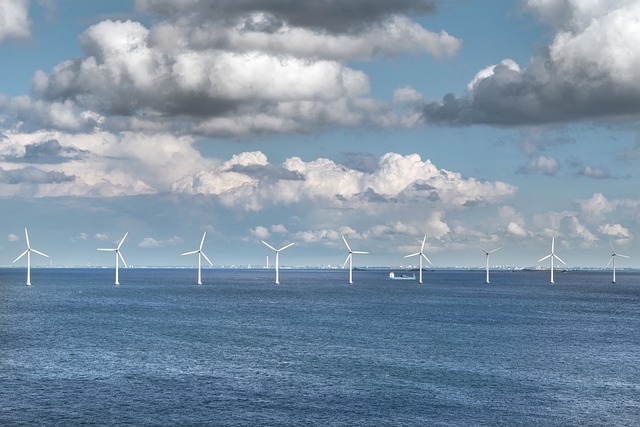[This article is an opinion piece by a summer program writer who visited the community in Morro Bay and learned about the impacts of the upcoming offshore wind farm]
 California is the second largest electricity-consuming state in the United States. How much of that energy do you think is renewable? California consumes around five times more fossil fuels than renewable energy!
California is the second largest electricity-consuming state in the United States. How much of that energy do you think is renewable? California consumes around five times more fossil fuels than renewable energy!
Fossil fuels are a problem because of their finite quantity and greenhouse gas emissions -- and these gases cause the planet to develop “hotter hots and colder colds”.
California is not new to heatwaves and wildfires, having experienced not only more frequent but also more intense droughts over the last two decades. San Francisco holds the record for the longest heatwave season, recorded at 111 days.
That is why California has set a goal to reach net-zero greenhouse gas emissions by 2045 and plans to introduce a wind farm in collaboration with Castle Wind off Morro Bay’s shore.
This grid will power a million households across Central California with up to 3,000 megawatts of renewable energy, making this the first and largest offshore plant on the West Coast. The project will be located 20 miles off the shore and will cover 376 square miles.
Despite the benefits this project brings, people are raising concerns regarding how it will affect the local economy.
Changing the View
Many locals argue that these 700-foot skyscraper-tall wind turbines will clutter the horizon and ruin the beautiful view of Morro Bay. This could harm tourism rates in Morro Bay which accounts for a tenth of San Louis Obispo’s tourism revenue.
Regardless, this isn’t true. The wind turbine facility will be placed far off the coast, making it inconspicuous to most tourists. “In reality, we will barely be able to see them. They won’t be any bigger than [the tip of a toothpick]”, said one of the tour guides (of the Piedras Blancas Lighthouse tour) I interviewed on my last trip to Morro Bay. Ergo it’s safe to conclude that the average tourist won’t notice a difference without looking closely.
Gone for Fishing or Fish Are Gone
Local fishermen have been complaining about how increasingly limited the numerous marine protected areas make their fishing grounds.
“If you saw a map of where you can't fish, it's like a mosaic on the ocean,” says Pavone, a local fisherman. “For me to make a really good day and make money, I'm driving an hour, hour and a half in my boat.” Now, fishermen are concerned that construction will scare the remaining fish.
However, the upside of the project should be considered. Should California prioritize preventing irreversible disasters or focus on saving the fish industry? Either way, the fisherman still need to feed their families.
Luckily, the government can provide workarounds by investing in artificial reefs to attract more fish or collaborating with marine biologists to minimize any impact on the fish. Other options include offering financial compensation to the fishermen if the fish populations have decreased or referring them to other job opportunities the offshore wind project will open up. According to REACH, the project will add around $250 million in annual economic benefits and could generate anywhere from 650 to 3,000 jobs adding both economic and equitable value.
Additionally, a study conducted at the offshore Block Island Wind Farm in Rhode Island determined there was little impact on the local fish population. Although the projects deal with different types of fish present and sizes (Morro Bay’s project being larger), it demonstrates that the fish migration patterns may not be altered. On the other hand, global warming warms the oceans which changes fish migration patterns anyway. The Bureau of Ocean Energy Management (BOEM) even stated they had considered the fishing grounds before approving the project.
The key takeaway of this project is how change will be in the coming decades. Transitions won’t always be seamless and often can have collateral damage attached, but it’s important to always prioritize not only our lives but the lives of future generations.
Sources: CalMatters, Morrobayca.org, CATF.us, Procon.org, KCBX, NASA, WHO






